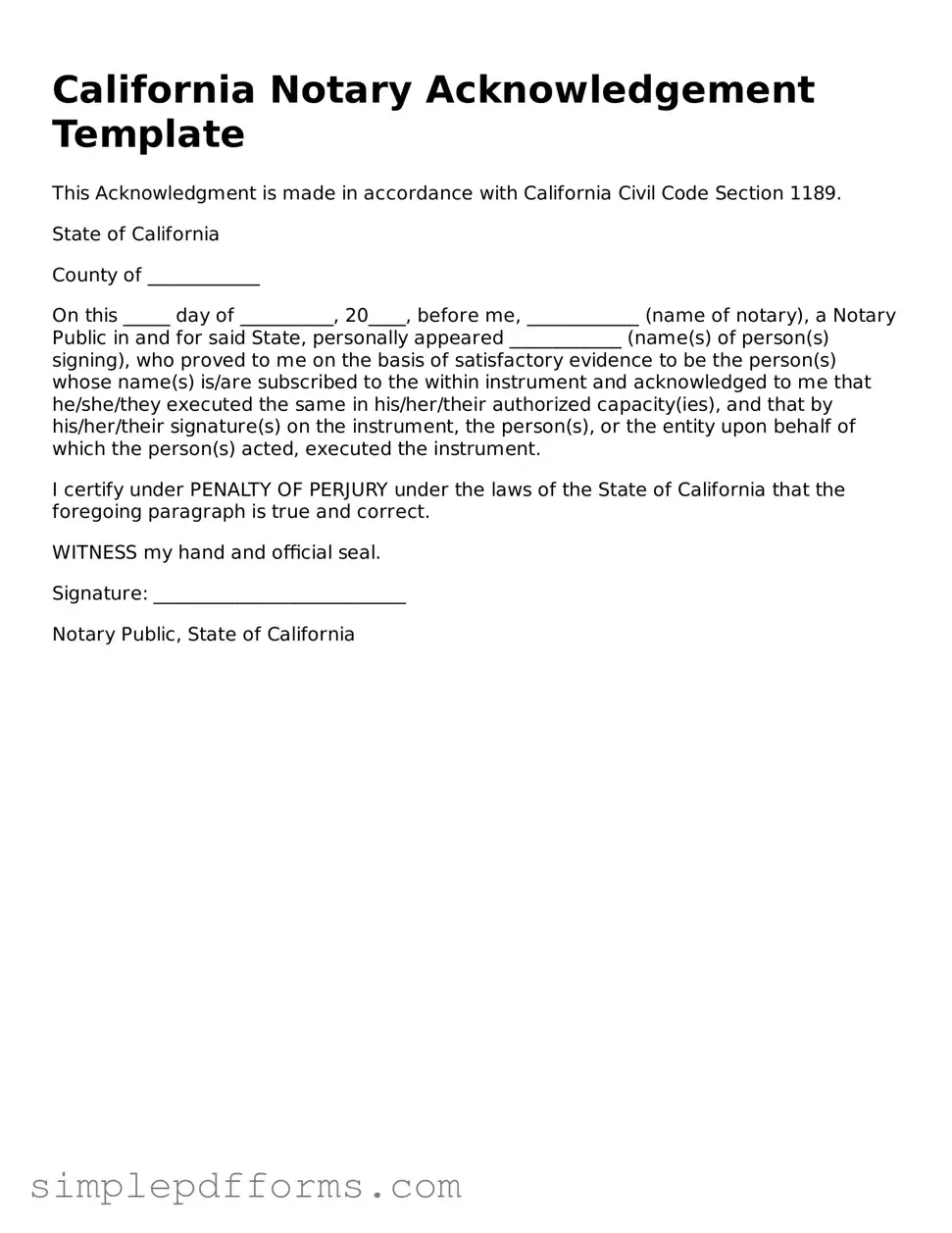Attorney-Verified Notary Acknowledgement Document for California State
The California Notary Acknowledgement form is a legal document used to verify the identity of a signer and confirm that they willingly signed a document. This form serves as proof that a notary public has witnessed the signing process. Understanding its purpose and requirements can help ensure that important documents are properly executed and recognized.
Open Notary Acknowledgement Editor Now
